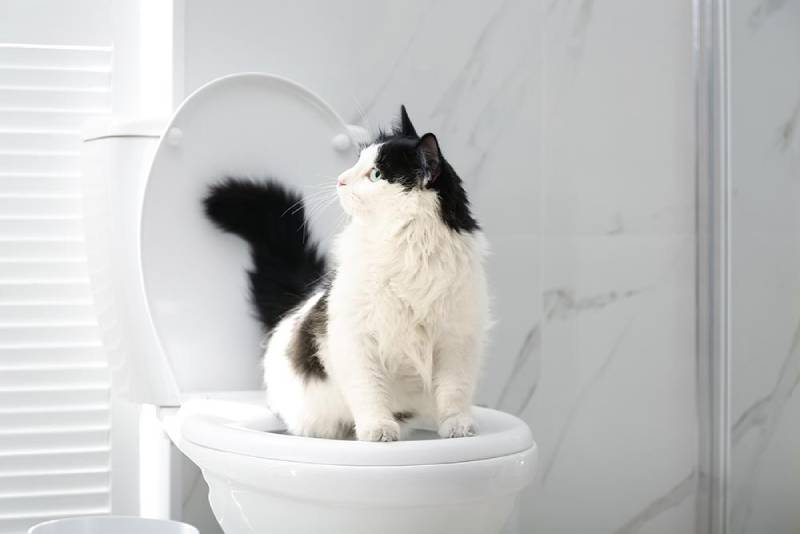The Dangers of Flushing Cat Poop Down Your Toilet - Tips for Better Handling
The Dangers of Flushing Cat Poop Down Your Toilet - Tips for Better Handling
Blog Article
Have you been trying to find ideas about How to Dispose of Cat Poop and Litter Without Plastic Bags?

Introduction
As feline proprietors, it's essential to be mindful of exactly how we dispose of our feline buddies' waste. While it may appear convenient to flush feline poop down the bathroom, this practice can have damaging repercussions for both the atmosphere and human wellness.
Alternatives to Flushing
Fortunately, there are much safer and a lot more liable ways to deal with feline poop. Consider the following alternatives:
1. Scoop and Dispose in Trash
One of the most usual approach of getting rid of feline poop is to scoop it right into an eco-friendly bag and toss it in the garbage. Be sure to make use of a committed clutter inside story and take care of the waste without delay.
2. Usage Biodegradable Litter
Go with eco-friendly pet cat trash made from products such as corn or wheat. These clutters are environmentally friendly and can be securely disposed of in the garbage.
3. Hide in the Yard
If you have a backyard, take into consideration hiding pet cat waste in a marked location far from vegetable gardens and water resources. Make certain to dig deep adequate to avoid contamination of groundwater.
4. Set Up a Pet Waste Disposal System
Purchase an animal waste disposal system specifically made for pet cat waste. These systems make use of enzymes to break down the waste, minimizing smell and ecological effect.
Health Risks
Along with ecological worries, flushing cat waste can also posture wellness dangers to humans. Pet cat feces might include Toxoplasma gondii, a parasite that can create toxoplasmosis-- a possibly severe illness, especially for expecting women and people with weakened body immune systems.
Environmental Impact
Flushing pet cat poop introduces hazardous pathogens and bloodsuckers into the water system, positioning a significant threat to marine environments. These contaminants can adversely affect aquatic life and concession water quality.
Verdict
Liable pet dog possession extends past offering food and shelter-- it additionally entails appropriate waste management. By avoiding flushing pet cat poop down the commode and choosing different disposal techniques, we can reduce our ecological impact and secure human wellness.
Why Can’t I Flush Cat Poop?
It Spreads a Parasite
Cats are frequently infected with a parasite called toxoplasma gondii. The parasite causes an infection called toxoplasmosis. It is usually harmless to cats. The parasite only uses cat poop as a host for its eggs. Otherwise, the cat’s immune system usually keeps the infection at low enough levels to maintain its own health. But it does not stop the develop of eggs. These eggs are tiny and surprisingly tough. They may survive for a year before they begin to grow. But that’s the problem.
Our wastewater system is not designed to deal with toxoplasmosis eggs. Instead, most eggs will flush from your toilet into sewers and wastewater management plants. After the sewage is treated for many other harmful things in it, it is typically released into local rivers, lakes, or oceans. Here, the toxoplasmosis eggs can find new hosts, including starfish, crabs, otters, and many other wildlife. For many, this is a significant risk to their health. Toxoplasmosis can also end up infecting water sources that are important for agriculture, which means our deer, pigs, and sheep can get infected too.
Is There Risk to Humans?
There can be a risk to human life from flushing cat poop down the toilet. If you do so, the parasites from your cat’s poop can end up in shellfish, game animals, or livestock. If this meat is then served raw or undercooked, the people who eat it can get sick.
In fact, according to the CDC, 40 million people in the United States are infected with toxoplasma gondii. They get it from exposure to infected seafood, or from some kind of cat poop contamination, like drinking from a stream that is contaminated or touching anything that has come into contact with cat poop. That includes just cleaning a cat litter box.
Most people who get infected with these parasites will not develop any symptoms. However, for pregnant women or for those with compromised immune systems, the parasite can cause severe health problems.
How to Handle Cat Poop
The best way to handle cat poop is actually to clean the box more often. The eggs that the parasite sheds will not become active until one to five days after the cat poops. That means that if you clean daily, you’re much less likely to come into direct contact with infectious eggs.
That said, always dispose of cat poop in the garbage and not down the toilet. Wash your hands before and after you clean the litter box, and bring the bag of poop right outside to your garbage bins.
https://trenchlesssolutionsusa.com/why-cant-i-flush-cat-poop/

We had been introduced to that report on How to Dispose of Cat Poop and Litter Without Plastic Bags from a good friend on a different domain. Liked our piece of writing? Please share it. Let other people check it out. Thank you for your time. Visit us again soon.
Call Today Report this page